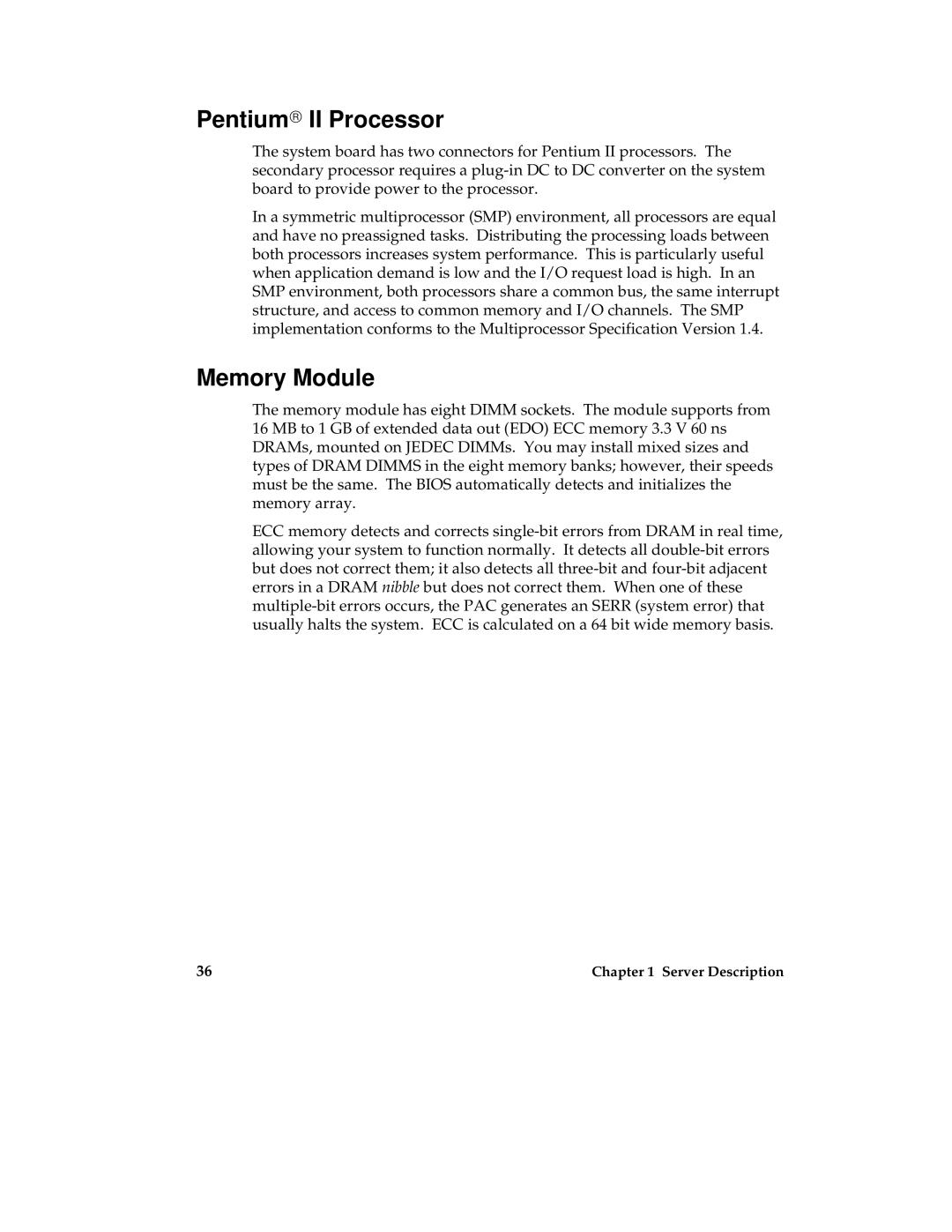Pentium® II Processor
The system board has two connectors for Pentium II processors. The secondary processor requires a
In a symmetric multiprocessor (SMP) environment, all processors are equal and have no preassigned tasks. Distributing the processing loads between both processors increases system performance. This is particularly useful when application demand is low and the I/O request load is high. In an SMP environment, both processors share a common bus, the same interrupt structure, and access to common memory and I/O channels. The SMP implementation conforms to the Multiprocessor Specification Version 1.4.
Memory Module
The memory module has eight DIMM sockets. The module supports from 16 MB to 1 GB of extended data out (EDO) ECC memory 3.3 V 60 ns DRAMs, mounted on JEDEC DIMMs. You may install mixed sizes and types of DRAM DIMMS in the eight memory banks; however, their speeds must be the same. The BIOS automatically detects and initializes the memory array.
ECC memory detects and corrects
36 | Chapter 1 Server Description |
